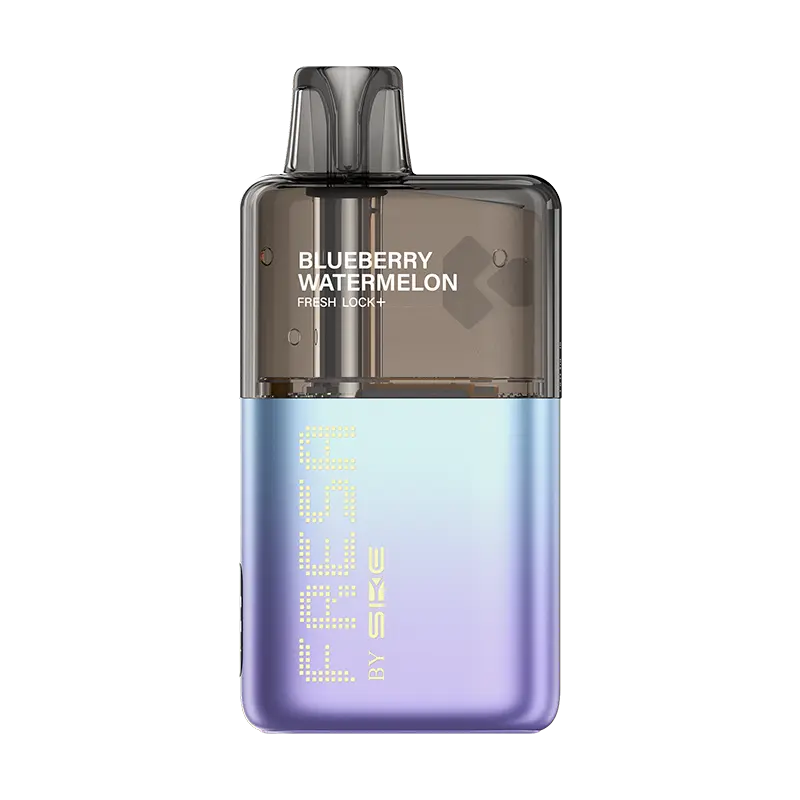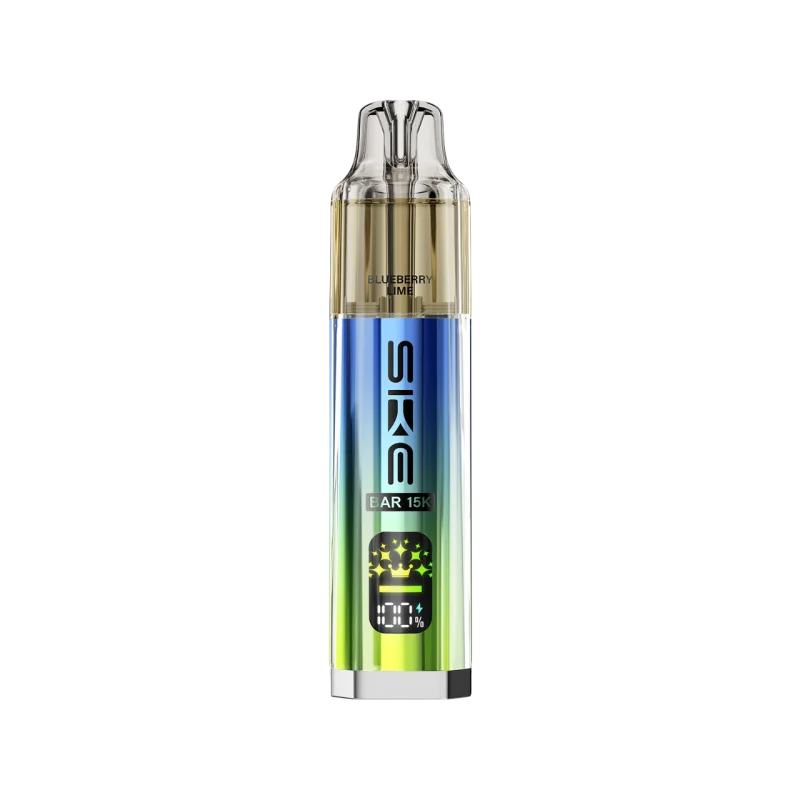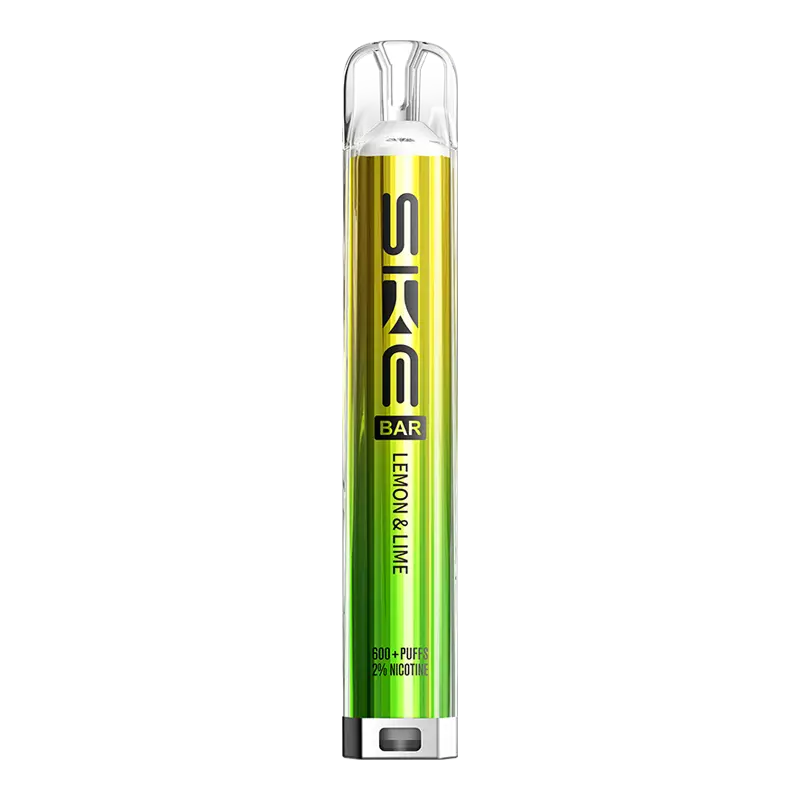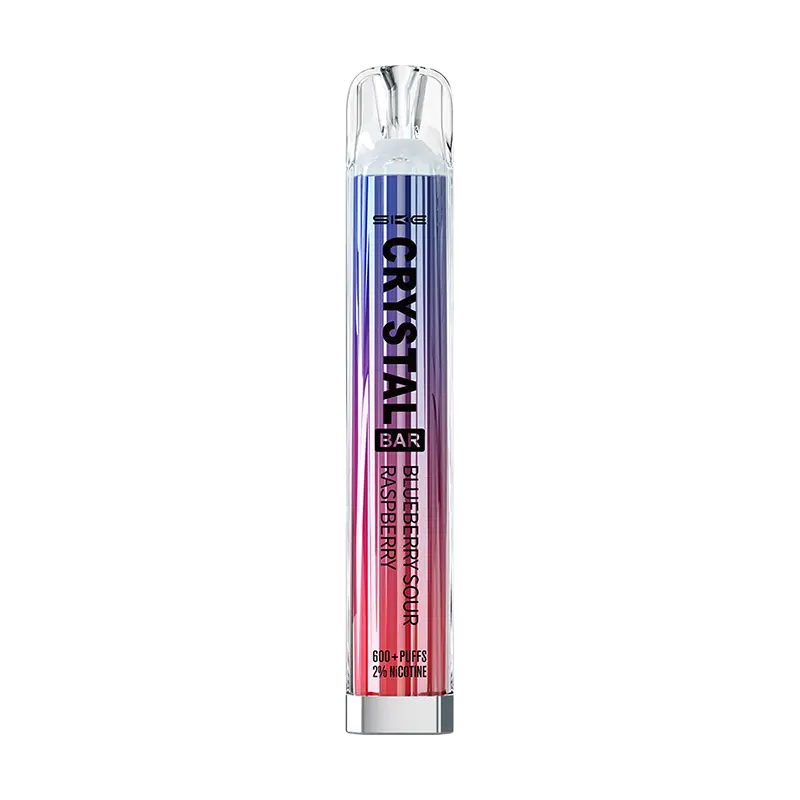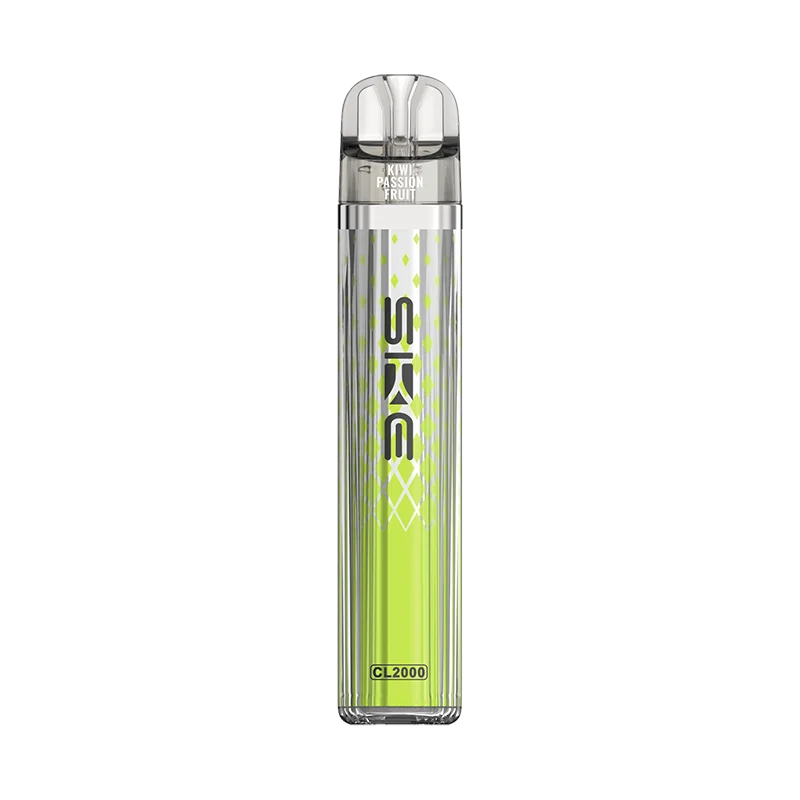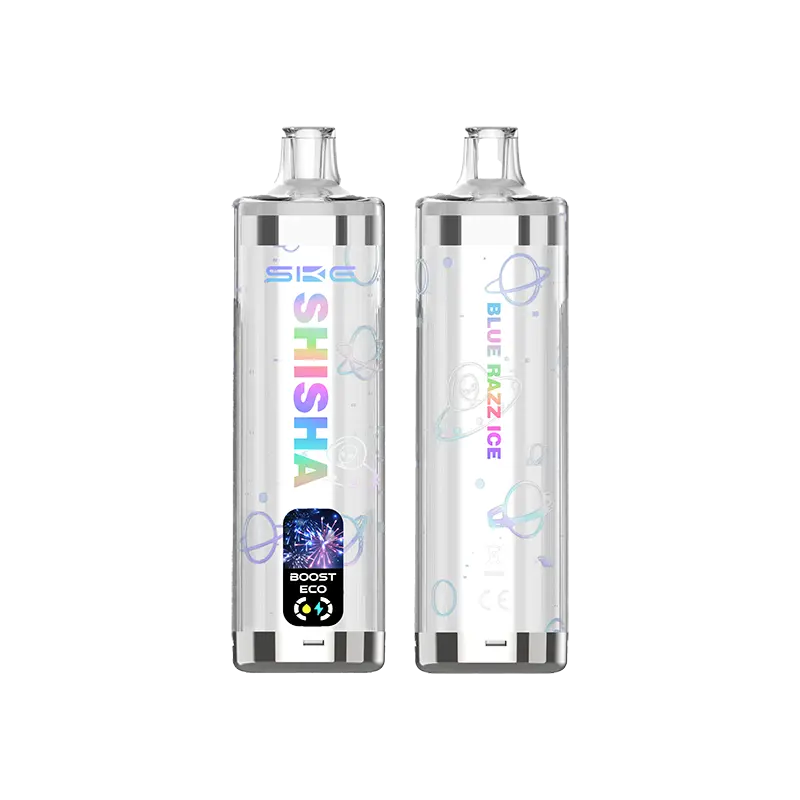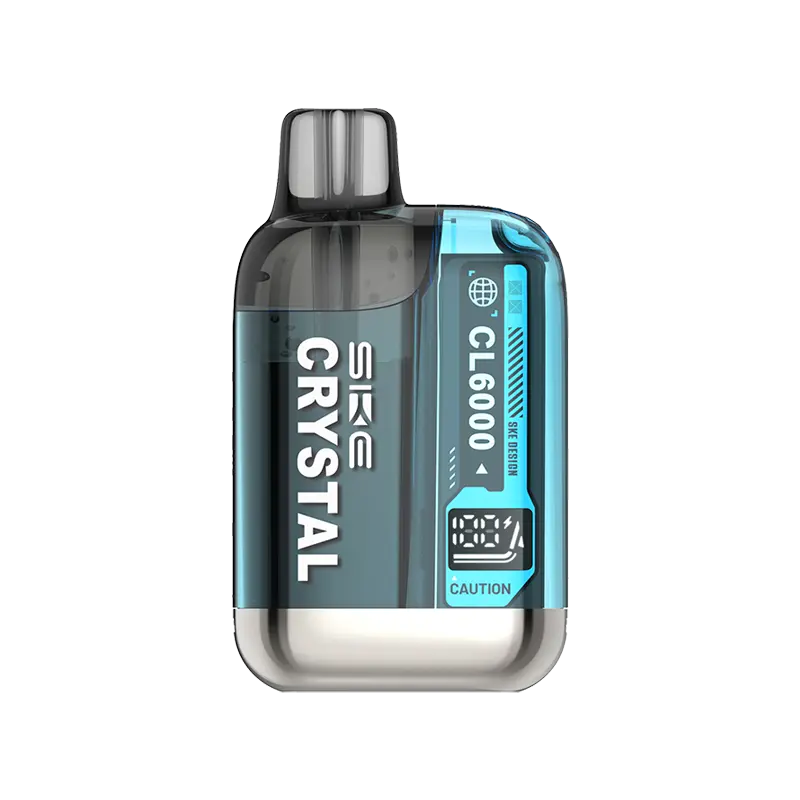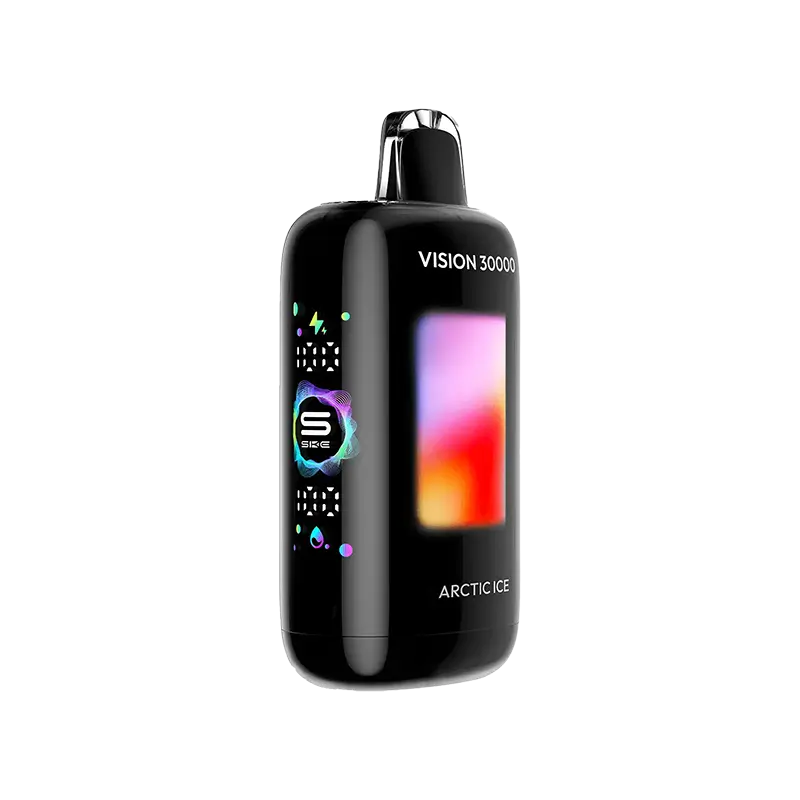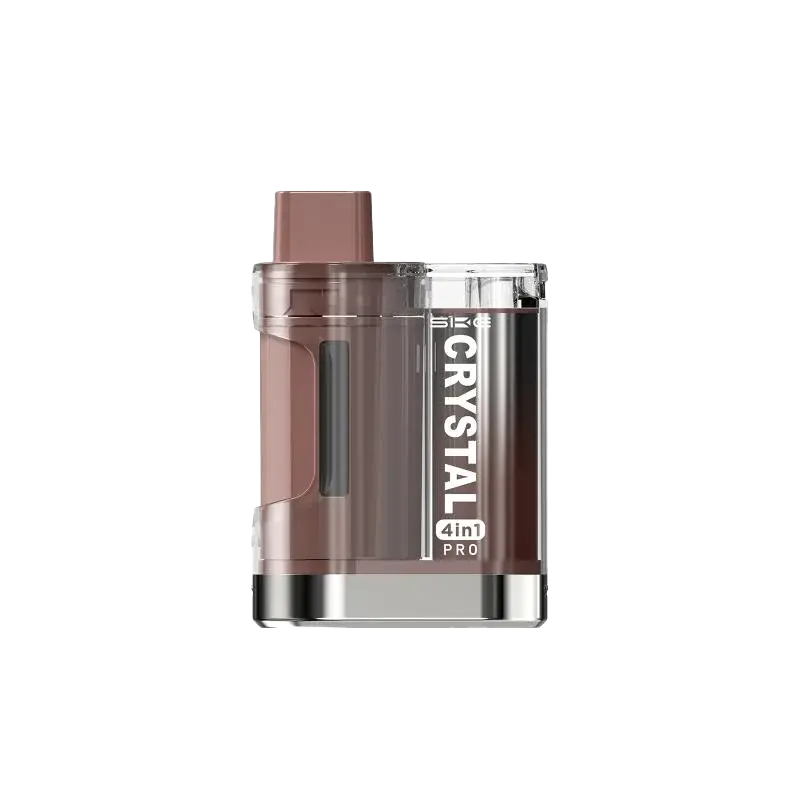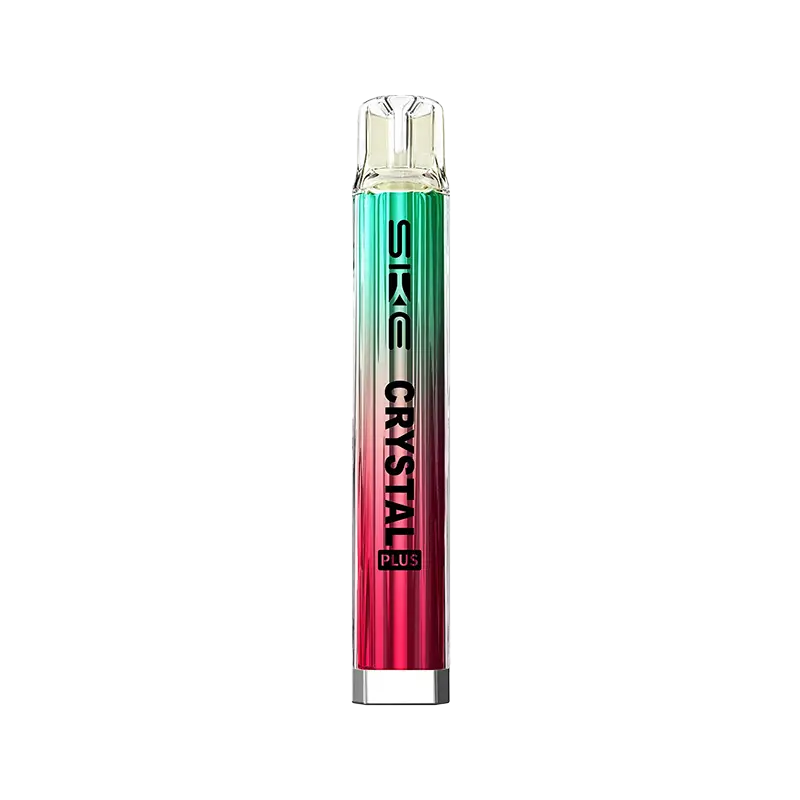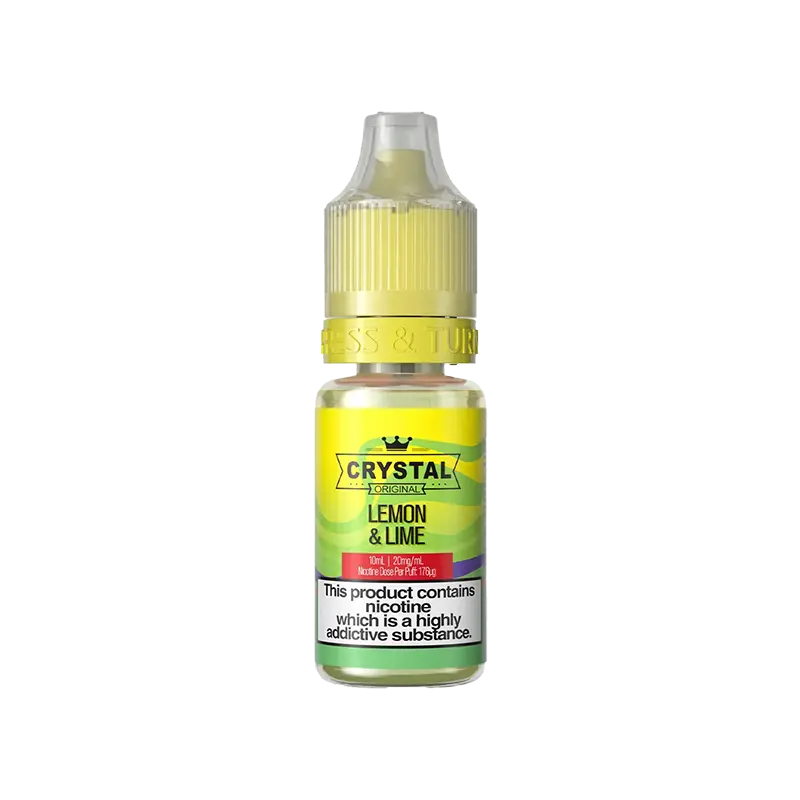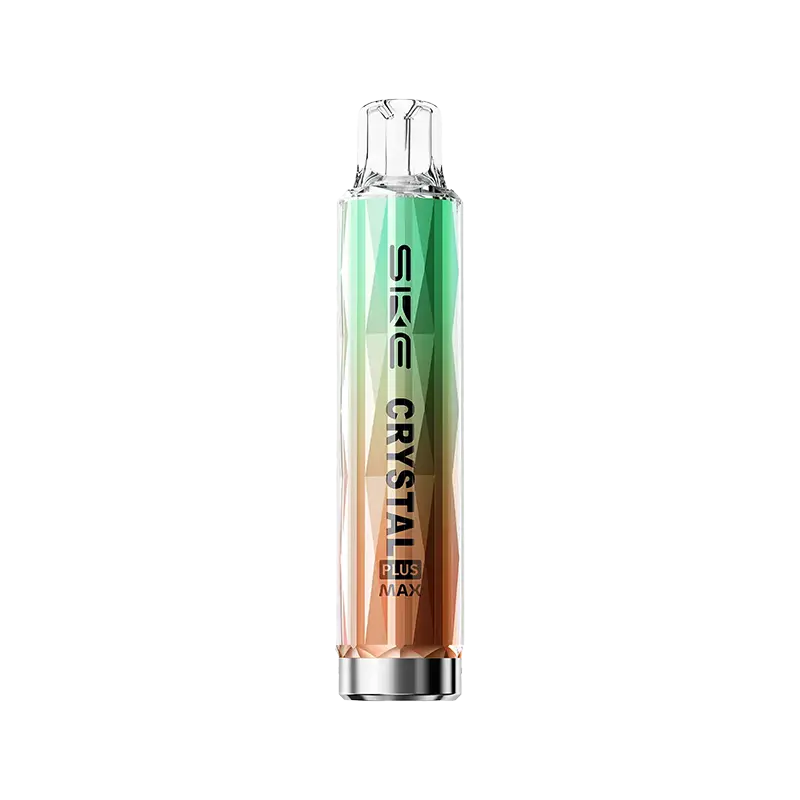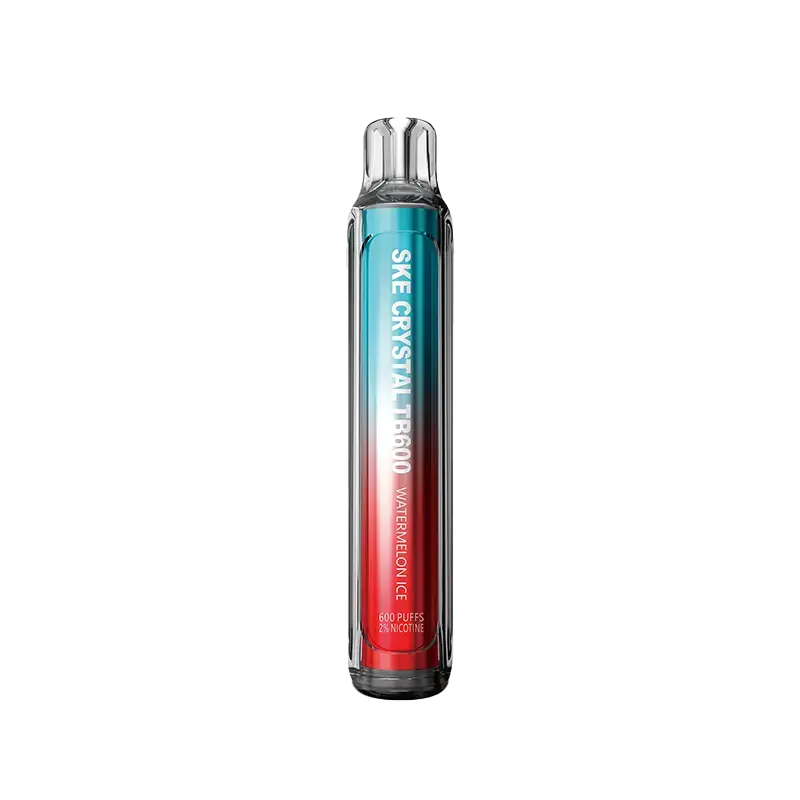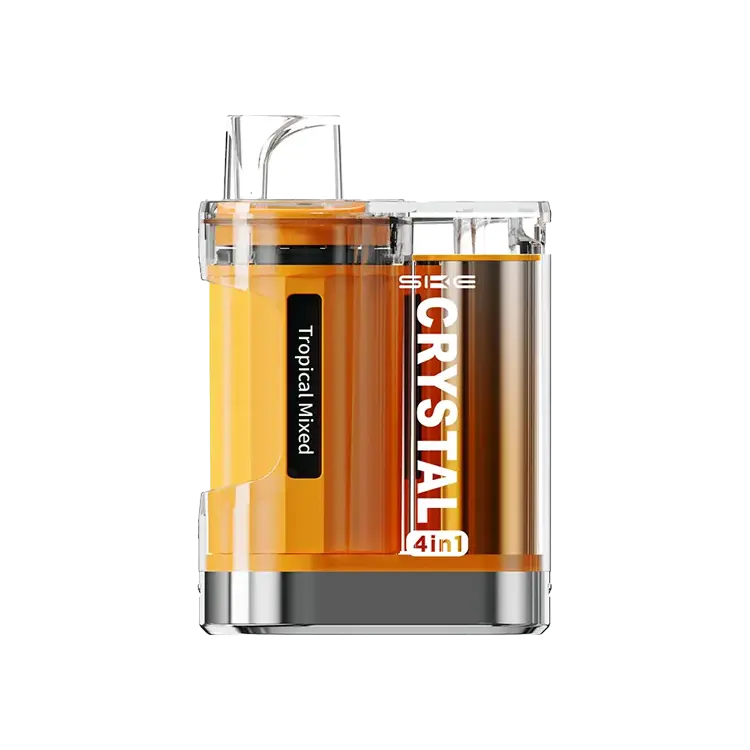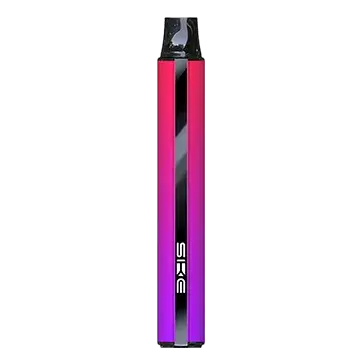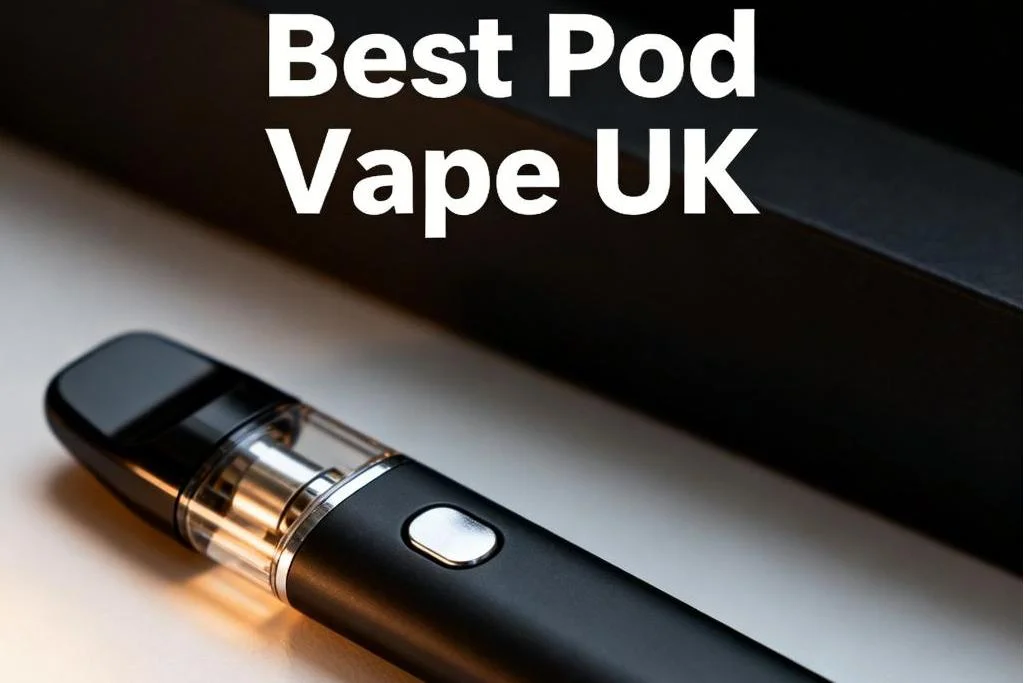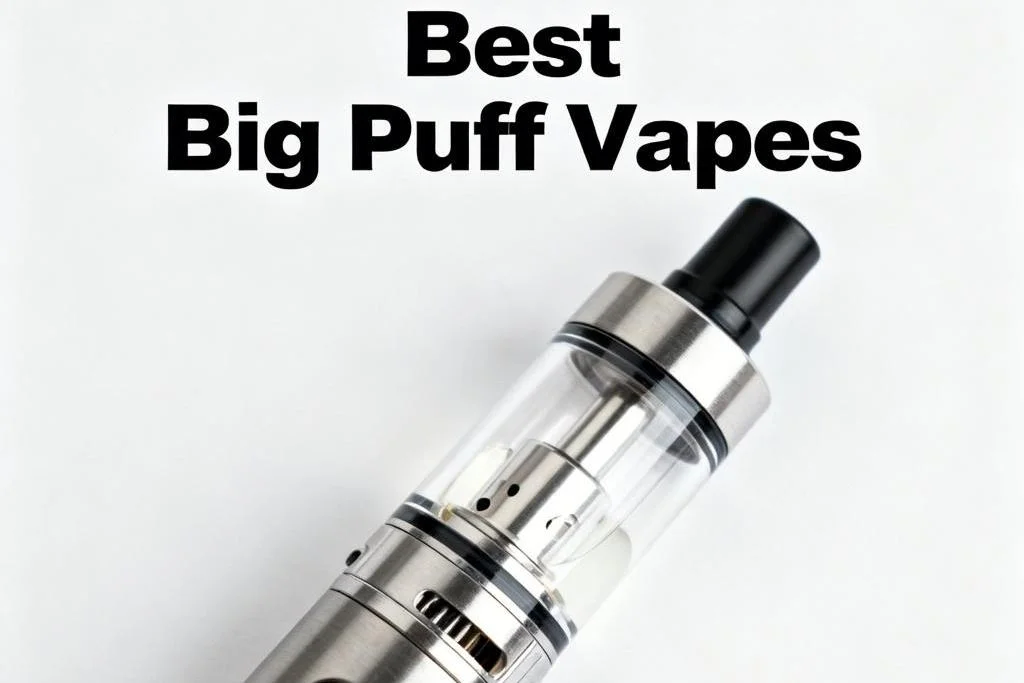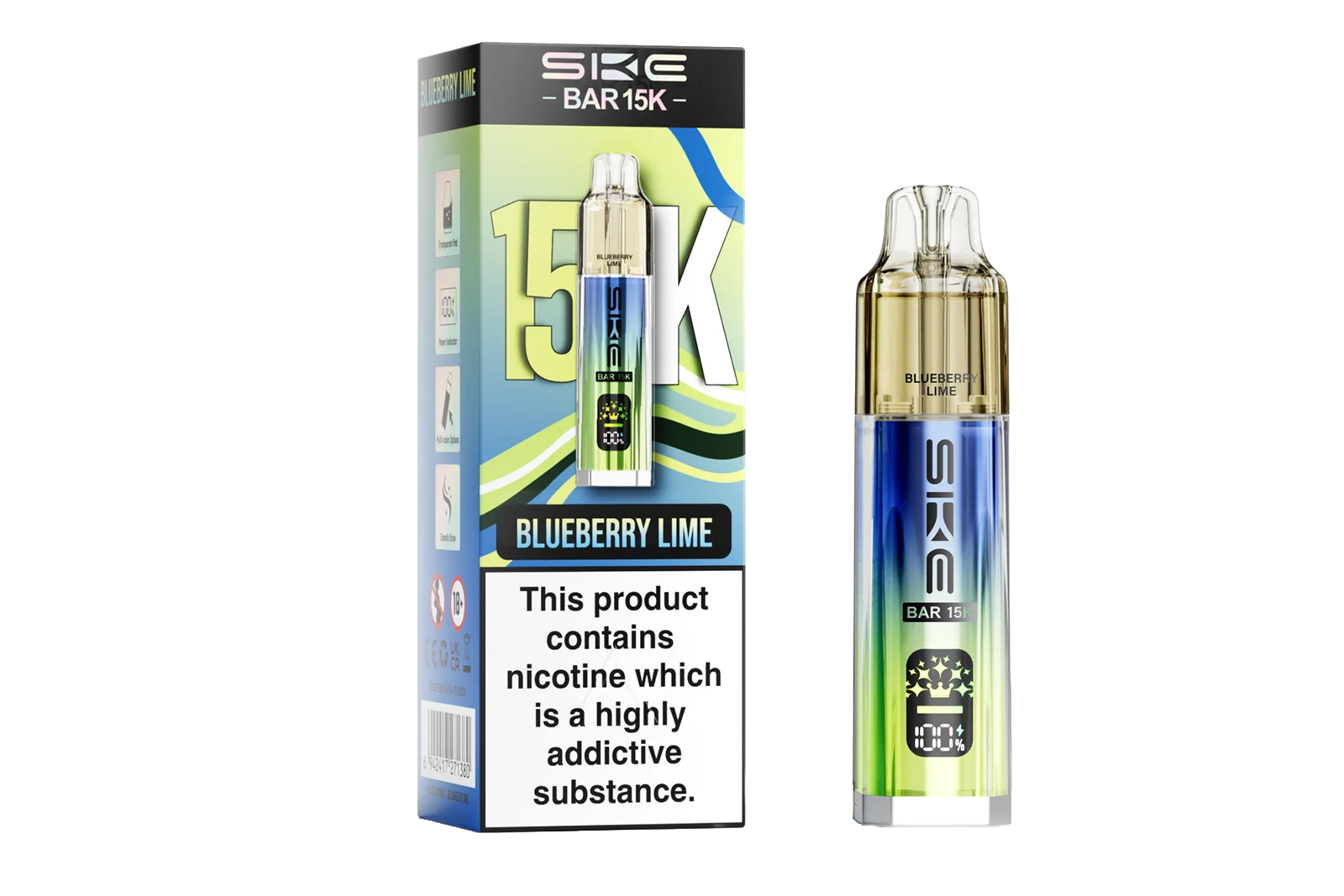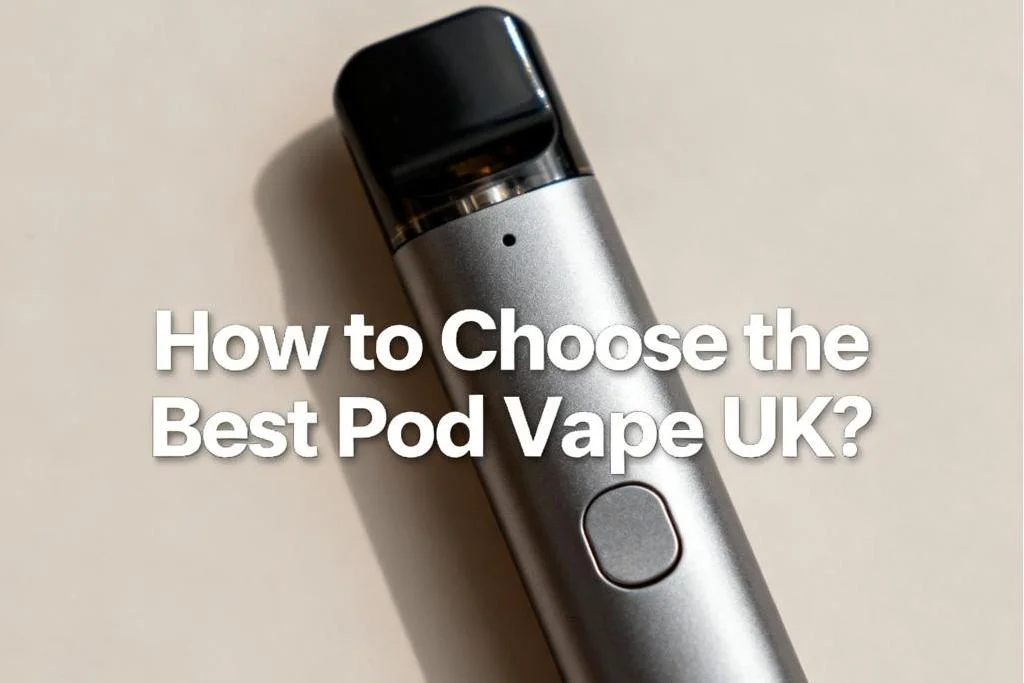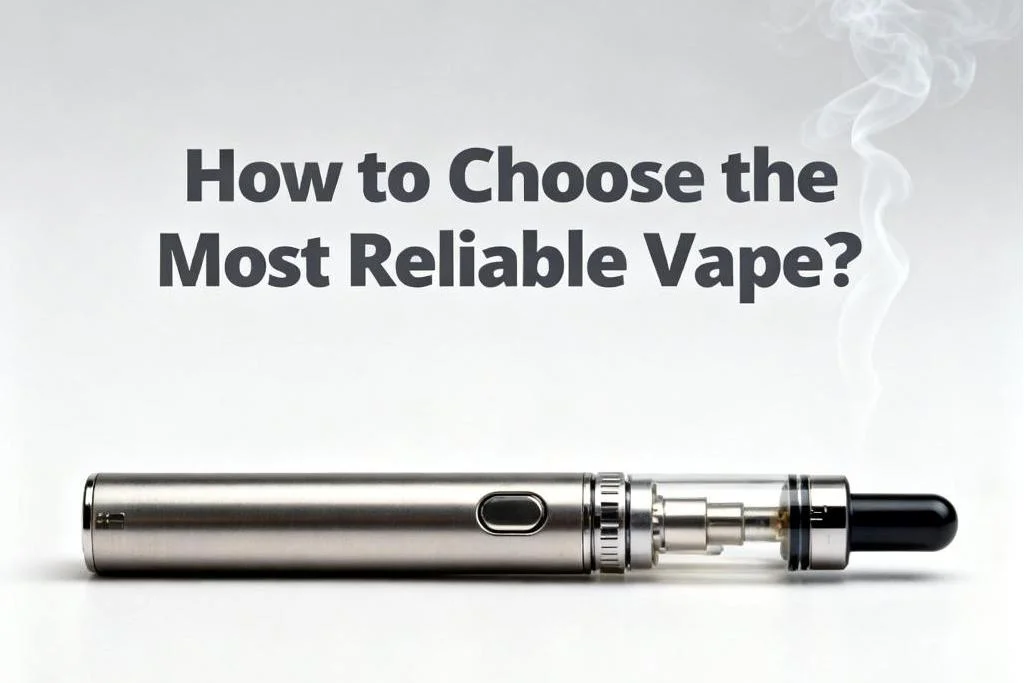What Does Atomizer Mean on a Vape?
Atomizer, as a crucial vape component, plays a pivotal role in delivering your favorite e-juice flavors. But, what does atomizer mean on a vape? In this comprehensive guide, we'll find details of what an atomizer is, how it functions, and explore different atomizer types. Let's start!
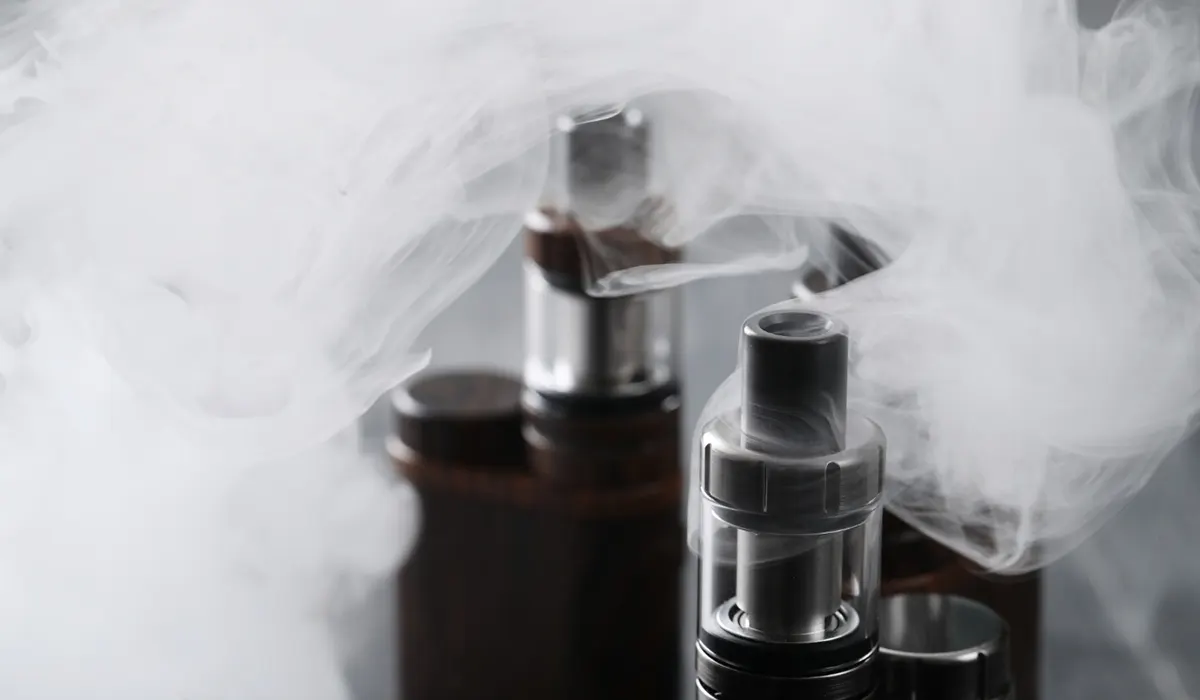
What Is an Atomizer?
An atomizer involving a wick and heated coil is responsible for the atomization process converting the e-liquid into an inhalable vapor. The wick, typically crafted from absorbent materials such as cotton, silica, or other fibrous substances, functions as the conduit for e-liquid delivery to the heating coil by saturating itself with the e-liquid. The coil, typically made of metal wire, is connected to the vape device's power source and generates heat upon activation. As the e-juice comes into contact with the heated coil, it vaporizes, transforming into a fine mist or aerosol that users inhale.
Components of an Atomizer on a Vape
Atomizer Coil: The heating powerhouse capable of generating temperatures between 180°F and 500°F, converts e-liquid into vapor by applying heat to the soaked wick.
Cotton Wick: The bridge between the coil and the e-juice reservoir, absorbs e-liquid and facilitates its transport to the coil for vaporization.
Functions of an Atomizer
Reservoir Holding: Hold the e-juice, serving as a crucial storage unit for the vaping liquid.
Heating Surface: Powered by a battery, is central in vaporizing the e-liquid, transforming it into the flavorful clouds vapers enjoy.
E-liquid Transport: Facilitating the continuous movement and supply of vape juice from the reservoir to the heating area.
How an Atomizer Works
The atomizer is essentially the workhorse of any vaping device, crucial for converting e-liquid into the vapor we inhale. Let’s break down its operation into a detailed step-by-step process to better apprehend how they collectively function to create the vaping experience.
1. Activation: Triggering the Vaping Process
Role of the Battery: The journey begins when you press the fire button on your vape device. It engages the battery, which sends an electric current directly to the atomizer's coil, akin to turning on a light switch, the electrical flow is the initial spark that sets everything else in motion.
2. Heating: Generating the Necessary Heat
Function of the Coil: As the electric current reaches the coil, its inherent electrical resistance converts this energy into heat. The material of the coil (often kanthal, nickel, or stainless steel) and its resistance level are specifically chosen to ensure optimal heating times and temperatures for vaporizing e-liquid.
3. Wicking: Ensuring Efficient E-Liquid Delivery
Role of the Wick: Parallel to the coil heating up, the wick (usually made from cotton or ceramic materials) draws e-liquid from the tank. It acts like a sponge, absorbing the liquid and maintaining contact with the heated coil.
Importance of Material Choice: The quality and type of wick material significantly influence how effectively it can transport and maintain the e-liquid at the coil. A good wick can absorb efficiently and resist burning, assuring that the flavor and quality of the vapor are consistent.
4. Vaporization: Turning Liquid into Vapor
Heat Application: The critical moment in the atomizer’s function is when the heated coil raises the temperature of the e-liquid absorbed in the wick to its boiling point, transitioning the liquid into vapor — a process governed by the precise balance of temperature and liquid properties.
5. Inhalation: Experiencing the Vapor
Journey to the Vaper: Once vaporized, the aromatic vapor travels upwards through the atomizer's structure, passing through the mouthpiece into the user’s mouth and lungs. It's where the user finally experiences the flavors, nicotine, and the tactile sensation of the vapor.
What Are Some Different Types of Vape Atomizers?
1. Cartomizer
The cartomizer, combined with affordability and disposability, comes in packs with diverse price options. However, vapers should be cautious, as the cost-effectiveness might be accompanied by subpar vapor quality and the possibility of leakage issues. Please consider the possible sacrifice when selecting these budget-friendly options.
2. Clearomizer
Clearomizers, featuring a straightforward and robust design, are directly connected to the battery, ensuring simplicity and durability. While they come at a higher cost, the user-friendly nature and long-lasting tank make them an attractive choice for those seeking ease of use and extended vaping sessions without frequent refills.
3. Dripping Atomizer
Crafted for enthusiasts seeking pure and intense flavors, dripping atomizers necessitate regular infusion of vape juice directly onto drip tips. Vapers should be prepared for the unique requirement of replenishing juice after every few puffs, ensuring a tailored experience for those who prioritize flavor richness in their vaping journey.
Disposable Vapes and Their Integrated Atomizers
Disposable vapes, like SKE Vape, feature simple pre-built atomizers for convenience and consistency. Despite being sealed, the quality of the pre-built atomizer significantly impacts the overall vaping experience. SKE Vape introduces innovative options for their Crystal disposable vapes, combining extended battery performance, flavor variety, creative designs, and affordability, no matter for the Lemon and Lime Crystal Bar or 4500 Puffs Crystal Super Max Vape.
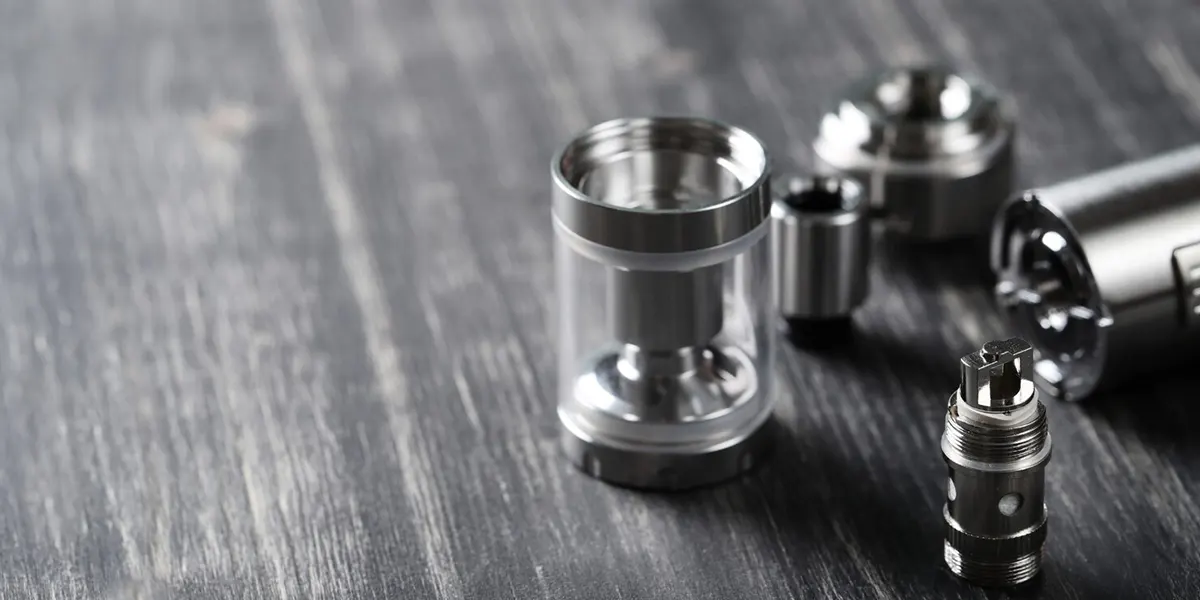
How Do You Clean a Vape Atomizer?
1. Cotton Bud Method
For a gentle clean, employ a cotton bud dipped in isopropyl alcohol, warranting cautious application to prevent any inadvertent damage to the delicate coil within the atomizer. Handle the cleaning process with care to safeguard the coil's integrity.
2. Atomizer Soak
Immerse the atomizer in alcohol for a brief 30-60 seconds to slowly dissolve impurities. The next step, use cotton buds to meticulously wipe away any residual dirt, ensuring the atomizer attains complete dryness before reintegrating it into your vaping device.
3. Pin/Paperclip Method
Utilize a pin or paperclip to dislodge stubborn residue in inaccessible areas of the atomizer. Then meticulously clean the entire atomizer to ensure optimal performance and a pristine vaping experience.
How Do I Know If My Atomizer Is Bad?
Different atomizers have varying lifespans, please consider replacement if you observe:
A. Burnt Taste:
A persistent burnt taste typically indicates that the coil is overheated or the wick is burnt out, often due to prolonged use or a failure to replace the coil on time.
B. Leaking E-Liquid:
If e-liquid leaks from the tank, it could point to worn-out seals or structural damage to the atomizer structure, compromising its integrity and performance.
C. Poor Vapor Production:
A noticeable decrease in vapor production or inconsistent vapor clouds often suggests problems with the atomizer’s coil or wicking material, possibly because of old coils or improper wicking.
D. Gurgling Sounds:
Unusual noises like gurgling or spitting during use often indicate that the atomizer is flooded, resulting from over-wicking, a failing coil, or excessive e-liquid within the coil assembly.
E. Frequent Dry Hits:
Experiencing dry hits frequently, even with a full tank, suggests inadequate wicking, which may mean the wick material is compacted, degraded, or incorrectly positioned, hindering proper e-liquid absorption.
F. Erratic Resistance Readings:
If your vape device shows fluctuating resistance levels or inconsistent ohm readings, it might indicate a problem with the atomizer’s coil, which can cause performance instability.
G. Visible Damage or Corrosion:
Physical signs of corrosion or visible damage to the atomizer's body, especially around electrical connections or the base where it meets the power source, can interfere with electrical conductivity and impair its function.
H. Unpleasant or Strange Flavors:
Aside from a burnt taste, any change to unpleasant, off-flavor, or metallic flavors can display residue buildup or issues with the atomizer affecting the coil’s ability to heat the e-liquid evenly.
I. Short Battery Life:
A decrease than usual in battery life may imply a malfunctioning atomizer as a faulty atomizer can cause the battery to work harder and draw excessive power.
J. Difficulty in Drawing:
Problems with inhaling easily from your vape could mean the airflow system linked with the atomizer is blocked or restricted, possibly because of over-tightening, improper assembly, or internal obstructions.
How to Solve an Atomizer Short on a Vape?
The perplexing message of "atomizer short" on your vape essentially serves as a notification or error prompt indicating that there's an issue with the atomizer, prompting the need for investigation and potential resolution to ensure a seamless and satisfying vaping experience.
Resolving an atomizer short involves a series of well-defined steps for the safety and functionality of your vape device. By systematically addressing each potential cause, you can efficiently restore your e cig’s performance.
Step 1: Power Off Your Device
- Importance of Safety:
Turning off the device is crucial to protect both the user and the device's intricate electronic components from potential damage due to electrical shorts or surges during the inspection.
Step 2: Inspect the Coil
- Visual Inspection:
Carefully remove the tank to access the coil and check for any signs of physical damage such as cracks, burns, or deformities, in addition to misalignment or looseness.
- Replacement Protocol:
If damage is visible, or if the coil shows signs of excessive wear (such as a burnt appearance or a lingering burnt taste when used), it’s imperative to replace it with a new one. Please choose coils compatible with your vape device for optimal performance.
Step 3: Secure Electrical Contacts
- Tightening the Coil:
Confirm that the coil is firmly screwed into the atomizer’s base since a loose coil might cause a short coupled with inconsistent performance and vapor production.
- Contact Integrity:
Verify that there is no gap between the coil and its housing, as proper contact without misalignment is essential for the electrical current to flow correctly and safely.
Step 4: Maintain Clean Connection Points
- Cleaning Process:
Use a dry cloth or alcohol wipe to meticulously clean the contacts on the coil and within the atomizer, which is vital to remove any e-liquid residue, dust, or other debris that could impede electrical connectivity.
- Ensuring Dry Contacts:
After cleaning, check that all contacts are completely dry before reassembly as residual moisture can cause short circuits or oxidation of the metal contacts.
Step 5: Test Functionality Post-Repair
- Careful Reassembly:
After cleaning and inspection, reassemble your vape device carefully to make sure every component securely fits in its designated place.
- Testing:
Power on the device and check if the atomizer short message still appears. If the issue seems resolved, try a test puff to assess whether the vaping device functions normally without any error messages or unusual behavior.
Step 6: Examine the Battery and Mod Connection
- Battery and Mod Inspection:
If problems persist despite the coil and contacts being in order, inspect the connection points between your atomizer and the battery or mod. Clean these areas thoroughly too, as debris here can also cause shorts.
- Secure Connections:
Certify that the atomizer is properly screwed into the mod and that there is no loose play, which can be a subtle cause of recurring shorts.
Step 7: Utilize Technology for Optimal Performance
- Updating Device Software:
For vapes with digital interfaces and firmware updates, check whether a newer version of the software is available. Updating can resolve functionality bugs along with improving device safety features.
- Checking Manufacturer's Site:
Always download firmware updates directly from the manufacturer’s website for compatibility and security.
Final Checks and Continuous Maintenance
- Professional Assistance:
If issues persist after all steps, consider seeking help from a professional or returning to a service center. Sometimes, complex electronic faults require specialized diagnostics and repair.
- Routine Maintenance:
Regularly clean and inspect your vape device even when it’s functioning well. Preventive maintenance can greatly reduce the frequency of issues like atomizer shorts.
To sum up, understanding what an atomizer means on a vape, basic maintenance, and troubleshooting can elevate your vaping experience. Whether you're a seasoned vaper or just starting, the atomizer is a fundamental aspect that deserves attention and appreciation.

FAQs:
Q1: Can I rinse my vape coil with water?
Rinsing your vape coil with water is not advisable, as it can introduce moisture and impurities, potentially compromising the coil's performance and leading to issues like flooding or reduced vapor production.
Q2: Do all vapes have an atomizer?
Not all vapes feature a distinct atomizer, as disposable vape devices may integrate it into the sealed unit, illustrating the diverse design approaches within the vaping technology.
Q3: Is an atomizer a coil?
While the terms are often used interchangeably, an atomizer encompasses more than just the coil. The coil, specifically, refers to the metal wire wrapped around the wick, responsible for heating and vaporizing the e-liquid.
Q4: Can I use any atomizer with any e-cig?
The answer is NO. The compatibility of any atomizer with a specific e-cig depends on factors such as threading, connection type, and resistance, necessitating thorough checking to ensure the components align seamlessly to the specifications of both the atomizer and the electronic cigarette, preventing potential performance issues.
TABLE OF CONTENTS
- What Is an Atomizer?
- Components of an Atomizer on a Vape
- Functions of an Atomizer
- How an Atomizer Works
- 1. Activation: Triggering the Vaping Process
- 2. Heating: Generating the Necessary Heat
- 3. Wicking: Ensuring Efficient E-Liquid Delivery
- 4. Vaporization: Turning Liquid into Vapor
- 5. Inhalation: Experiencing the Vapor
- What Are Some Different Types of Vape Atomizers?
- 1. Cartomizer
- 2. Clearomizer
- 3. Dripping Atomizer
- Disposable Vapes and Their Integrated Atomizers
- How Do You Clean a Vape Atomizer?
- 1. Cotton Bud Method
- 2. Atomizer Soak
- 3. Pin/Paperclip Method
- How Do I Know If My Atomizer Is Bad?
- A. Burnt Taste:
- B. Leaking E-Liquid:
- C. Poor Vapor Production:
- D. Gurgling Sounds:
- E. Frequent Dry Hits:
- F. Erratic Resistance Readings:
- G. Visible Damage or Corrosion:
- H. Unpleasant or Strange Flavors:
- I. Short Battery Life:
- J. Difficulty in Drawing:
- How to Solve an Atomizer Short on a Vape?
- Step 1: Power Off Your Device
- Step 2: Inspect the Coil
- Step 3: Secure Electrical Contacts
- Step 4: Maintain Clean Connection Points
- Step 5: Test Functionality Post-Repair
- Step 6: Examine the Battery and Mod Connection
- Step 7: Utilize Technology for Optimal Performance
- Final Checks and Continuous Maintenance
- FAQs:
- Q1: Can I rinse my vape coil with water?
- Q2: Do all vapes have an atomizer?
- Q3: Is an atomizer a coil?
- Q4: Can I use any atomizer with any e-cig?
